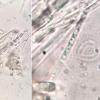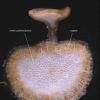
15-11-2025 23:22
Mario FilippaHello,this is what I think to be Hymenoscyphus mac

14-11-2025 16:26
 Marian Jagers
Marian Jagers
Hello everyone, On dead wood of Cytisus scoparius

15-11-2025 20:25
 Riet van Oosten
Riet van Oosten
Hello, Found by Laurens van der Linde, Nov. 2025

14-11-2025 18:31
 Lothar Krieglsteiner
Lothar Krieglsteiner
Hello,can somebody provide me with a file of:Rothe

12-11-2025 09:25
 Viktorie Halasu
Viktorie Halasu
Hello, I need help with a pale terrestric Pseudom

11-11-2025 20:16
Bohan JiaHi, lastly I have found these tiny yellow decayin

09-11-2025 13:20
Hello.A tiny ascomycete, appearing as erupting gra
I found this tiny pale yellow Hymenoscyphus on twigs, leaf petioles and leaves of what may have been fraxinus in a wetland area in New York City in the Bronx. The forest was composed of ash, maple, oak and sweet gum.
The apothecia are about 1.5mm tall with a yellow hymenium. The stipe is lighter in younger specmens, but becomes brown in older specimens.
Spores are hyaline, multi-guttulate usually with 2-4 larger guttules and several smaller ones, some curved, many with one blunt end and one acute end. Dimensions:
14.2-21.6 x 3.6-6.0µm
Me: 18.6 x 4.8µm
Q: 2.4-5.3
Qe: 4.0
N=15
Asci, clavate, IKI+, with croziers. Dimensions:
91-112 x 8-12µm
Paraphyses with tiny guttules, cylindrical, about 3µm wide.
Ectal excipulum textura porrecta. Some brown pigmentation in the Ectal.
It is not certain that the substrate is Fraxineus. As far as I know Ash dieback caused by H. fraxineus is not reported from North America. (Unfortunately, I get a overwhelmed with Google results leading me in that direction if I include the possible substrate in my searches).
Any help would be appreciated.
Thanks!
Ethan


Looking at the spores, I wonder whether there are very short (1-2 µm long maxi) cilia at their ends or not ?
Amitiés Michel

I am not sure KOH would help with the observation of cilia . I join your plate with the suspected spore ends with short ones, but not sure. I also join a picture with H. scutula spores with short cilia to compare. But H. scutula has no croziers and it grows on plant stems rather than twigs.
Michel



Amitiés. Michel
Thank you all again for your help.



can you please make a section of the petiole (or rachis), in water? Some other hosts with long petiole (eg. Acer, Q. rubra) can be excluded by its anatomy.
Viktorie


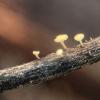
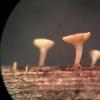







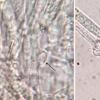
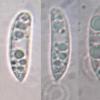
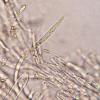



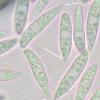

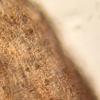

 wood-6919-0001.jpg
wood-6919-0001.jpg

